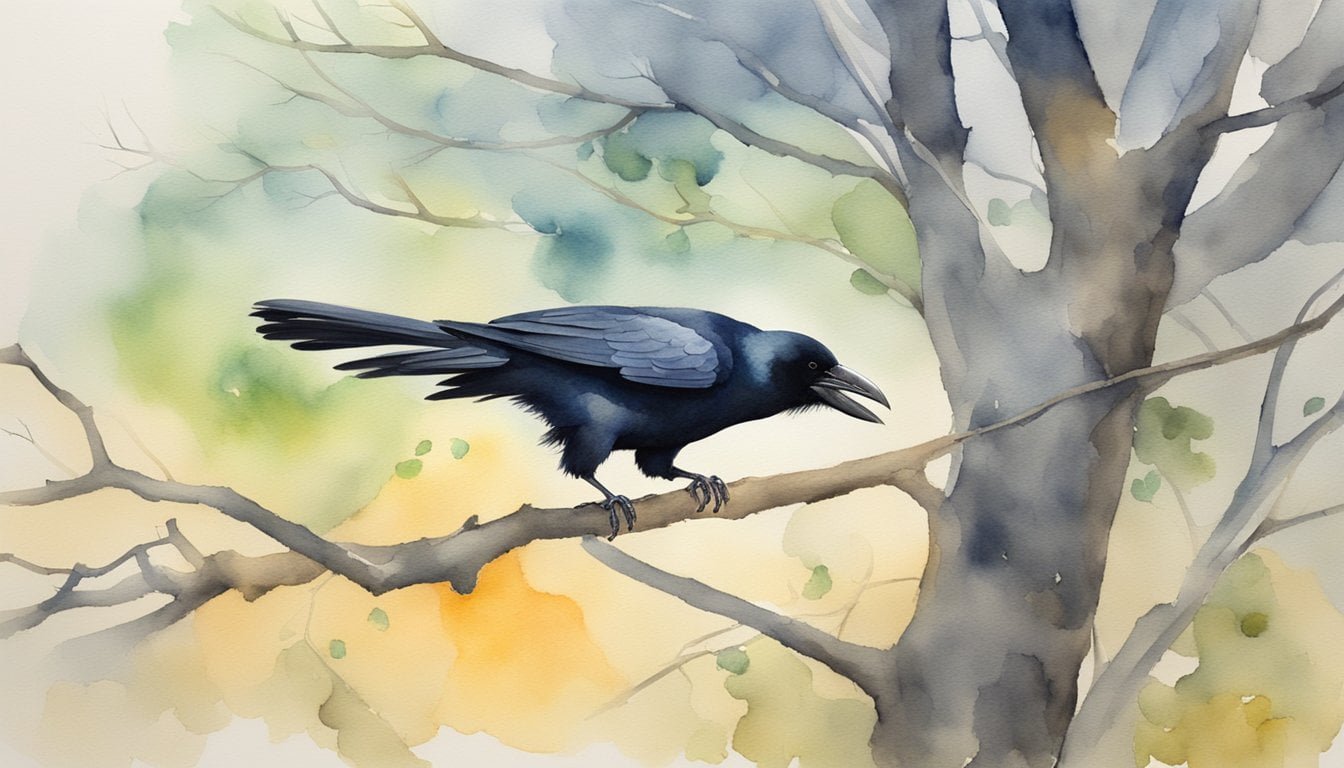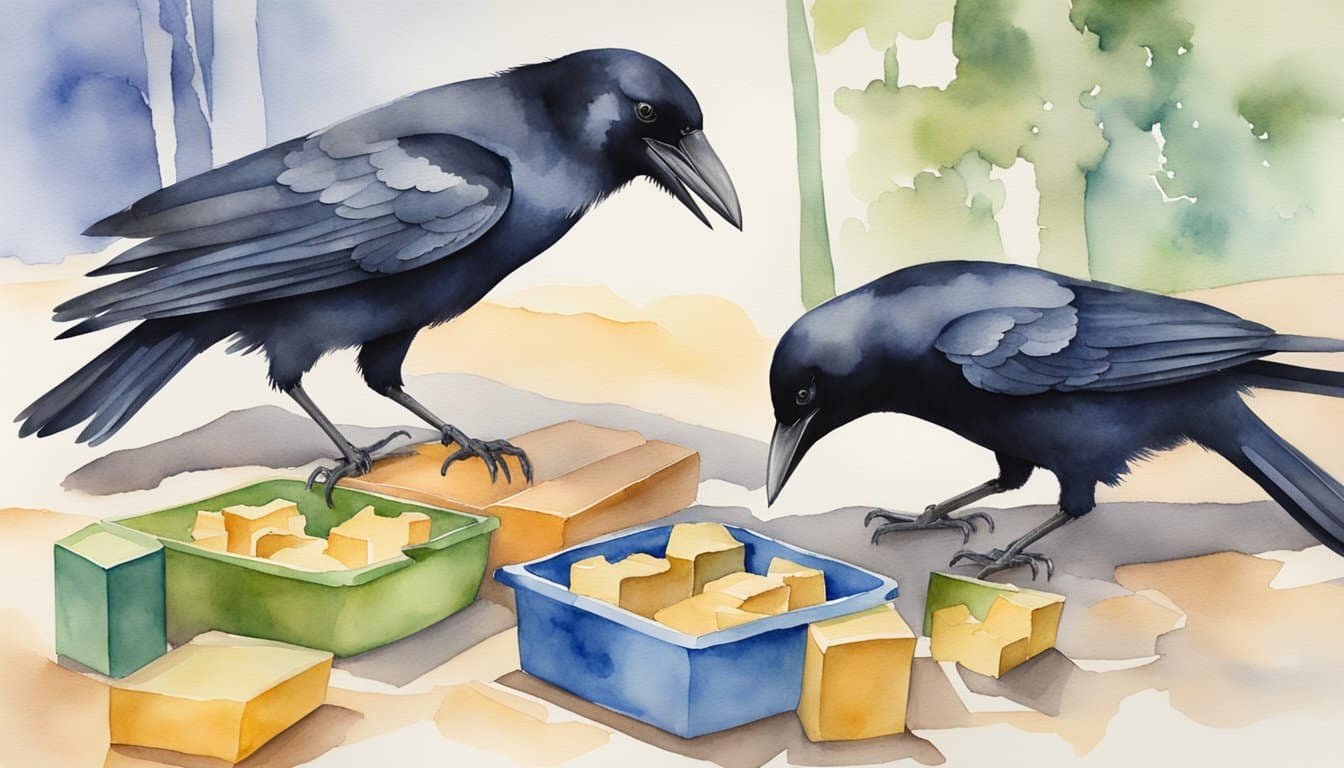Understanding Crow Intelligence
Crows and their corvid relatives are renowned for their remarkable cognitive abilities, standing toe-to-toe with primates in feats of intellect. The brains of these birds hold neural architectures that rival the complexity of higher mammals, underscoring an evolutionary origin to their smarts and demonstrating sophisticated problem-solving capabilities that can amaze even the seasoned ornithologist.
Neurobiology of Corvids
The crow and its corvid cousins possess a brain structure with an elevated number of neurons, concentrated in the pallium—the bird equivalent of the mammalian cortex. Unlike in many other bird species, the pallium in corvids such as the New Caledonian crow is densely packed, which allows for enhanced cognitive function. Research suggests that these birds can engage in mental tasks such as tool use and planning, feats that were once thought to be the domain of primates.
Evolutionary Perspective
From an evolutionary perspective, corvids have followed a path that mirrors the development of high intelligence found in apes. Despite their separate evolutionary histories, both primates and corvids have faced complex social and environmental challenges, which may have driven the development of their advanced cognitive abilities. This parallel evolution is a testament to the ways in which intelligence can arise in different species under similar selective pressures.
Cognitive Abilities
Corvids display a wide repertoire of cognitive abilities that underscore their intelligence. For example, the New Caledonian crow has been observed manufacturing and using tools—a capability that necessitates an understanding of cause and effect relationships. Ravens, too, demonstrate impressive problem-solving skills and are known for their ability to plan for future events, a capacity once asserted to be exclusively human. These cognitive skills are not just instinctive behaviors but are signs of a deep understanding of their environments and the ability to adapt their actions accordingly.
List of known cognitive skills exhibited by corvids:
- Tool creation and use
- Insight problem solving
- Social learning and manipulation
- Planning for future needs and events
The prowess seen in bird intelligence, particularly within corvids, is steadily altering the way scientists comprehend the origins and manifestations of intelligence across species.
Social and Tool-Using Behaviors

Crow species, particularly New Caledonian crows, exhibit remarkable social and tool-related behaviors, with advanced communication abilities and sophisticated problem-solving skills that often involve the use of tools.
Communication and Language
Crows communicate with a complex system of calls and body language. Jackdaws, a member of the crow family, facilitate bonding and social cohesion by calling to each other with specific frequencies that can vary depending on the context. Each call can convey distinct messages, from warnings of a predator’s approach to the location of a food source. Understanding crow communication is key to unraveling the intricacies of their social behavior.
Problem-Solving and Tool Use
Crows are not just social creatures; they are also intelligent problem solvers. They may use tools to access food in ways that were once thought to be exclusive to humans. New Caledonian crows, in particular, demonstrate advanced tool-using capabilities, such as crafting hooks from twigs to retrieve food from tight crevices. This level of tool use indicates a complex understanding of their environment and the objects around them. Rooks have also been observed using stones to raise the water level in a pitcher to bring floating food within reach—a classic example of their problem-solving abilities at play.
Both social and solitary activities in crows can involve tools and demonstrate their high cognitive capabilities. Whether using sticks to extract insects or working together to chase predators, the intelligent behaviors exhibited by crows are the subject of fascination and continued study.
Comparative Intelligence Studies

In the realm of comparative intelligence studies, researchers are fascinated by how intelligence in crows measures up against other animals and how different study settings influence our understanding of animal cognition.
Corvids Versus Other Species
Crows and other corvids display remarkable cognitive abilities that rival and sometimes surpass the intelligence observed in other non-human species, such as monkeys and great apes. For instance, these feathered geniuses have shown problem-solving skills and tool use reminiscent of what is seen in our close evolutionary relatives. Some studies even suggest that the cognitive capabilities of crows are on par with those of human children, with tasks involving analogical reasoning and attribute learning being completed by crows with astonishing success.
Field studies of corvids have shed light on their sophisticated social structures and adaptive behaviors. Meanwhile, laboratory research has allowed for controlled experiments that delve deeper into the specifics, such as object permanence and numerical competency that are often attributed to higher mammals. Research conducted at Lund University by Mathias Osvath has notably contributed to our understanding of corvid intelligence, positioning these birds as cerebral heavyweights in the animal kingdom.
Field Studies and Laboratory Research
Field research entails observing crows in their natural habitats, such as the studies done by Kevin McGowan of the Cornell Lab of Ornithology, revealing insights into their complex social behaviors and adaptability. On the other hand, controlled laboratory experiments have extensively documented the impressive cognitive feats of these birds. Irene Pepperberg’s notable work with a parrot named Griffin showcases the potential for complex communication in birds, an area previously assumed to be exclusive to primates, adding a new twist to our comprehension of intelligence across species.
Field Observations:
- Social behaviors
- Adaptability
- Problem-solving in natural settings
Laboratory Experiments:
- Object permanence
- Numerical competency
- Communication and mimicry skills
By comparing the cognitive abilities of corvids with those of primates and parrots, scientists are painting a picture of intelligence that transcends the boundaries of taxonomy and challenges our preconceived notions about the human brain’s uniqueness in the realm of complex thought.

